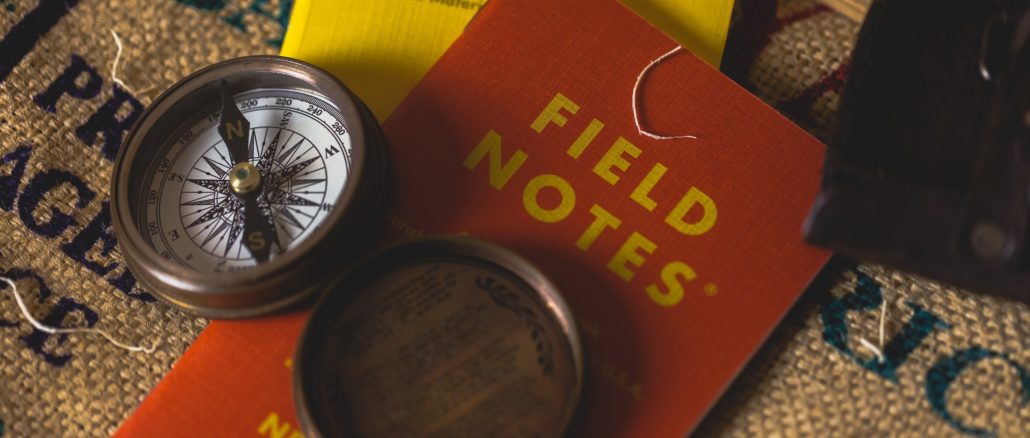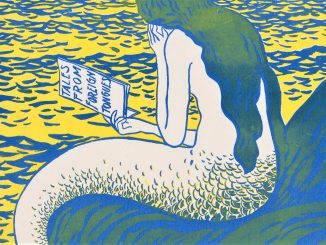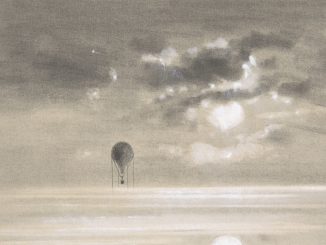
Today, I am hiking on a mountain. I pass a shirtless man with long hair and bid him a good morning. He asks me what I’m writing in my pad, where I am getting down thoughts, and I almost say they’re for a piece of past remembrances but I just tell him they are notes.
He is going in my direction, asking “what the fuck the notes are for.” And I tell him they’re for my art.
“Oh, you’re an artist,” he says, waving his arms around. “What kind of an artist are you, the kind that’s poor or the kind that sells out? You know I knew a photographer that made 25,000 dollars a day. Can you make that much?”
We’re wending our way through the craggy path, and he continues. “I had a working relationship with art once, went to LA Trade Tech. For over twenty years I did…” He drops off for a second, livid or merely huffing and puffing. “So, you go to school for art and tell me what you learn.”
I think about the answer but don’t get the chance.
“They put you out there and you need to make stuff. But it’s all about fighting the ego. We all get the ego coming around, fucking shit up. The teachers don’t teach that. It’s better if you took your little notebook and shoved it up your ass, they’d like that better.”
I turn to look at him and he’s keeping pace with me. There is still ten minutes to go on this trail before I return to the parking lot and to my car.
He is calling me an intelligent young man and he says I am in pretty good shape, able to make him get a little out of breath — but we’re about the same age and I’m really picking up the pace in the hopes of losing him. “I saw art,” he goes on. “I was there! I saw Michelangelo, and after that I didn’t need anything else!” Here is when the guy starts screaming, flailing his arms around, hollering about fucking art and the greatness of Michelangelo, that son of a bitch!
I am assessing the situation. People like my mother would look at this as an opportunity. She once told me about a 24-hour coffee and donut shop where she and her sister were caught in a conversation with a stranger in the next table who appeared homeless and was going on and on about things. Years later, the same thing happened to me when a friend and I ended up late one night at some 24-hour donut place that had nobody else but this bearded man two tables down with a paper cup in front of him talking to us about the ways of the world. My mother the next day was convinced that the bearded man was some kind of saint or possibly an angel in the guise of the lowest of the low, and she was positing the idea that the bearded man my friend and I talked to was the very same homeless man she had run into all those years before.
It didn’t matter if anybody would believe such a thing because it went beyond the scope of the situations and created a connection. This was not about the bearded man or the homeless man but about finding meaning in coincidence. And this was not about the shirtless man this fine morning but more about what propelled him into going on and on about a subject in which he felt he had some expertise.
At the moment the guy was bellowing and gesticulating, my mind was racing. Do I humor him? Is he dangerous? Is he just having fun, you know a little play acting? This could be a man who sees himself as the wise man of the woods, a former biker, a journeyman, a wandering artisan; or this could be a man subjected to too many movies who has chosen this persona based on two or three fictitious characters he held in high regard, and so modeled his discourse accordingly. His traits are what goaded him to wax impassioned about these areas of interest. I do believe this provided the fuel.
But the spark was my notepad. The shirtless man was reacting to my notepad; he was looking at my busy hands before ever looking into my face. A notepad is a social weapon. If you pull out a notepad at a restaurant or when waiting in line for an official to attend to you, you are putting people on the alert. A notepad is a reminder that the things people say and do can come back to haunt them — even in this day and age when nobody uses notepads.
To me, a notepad is the kind of tool that allows you to place thoughts on paper at almost any opportunity. If I compare it to daydreaming at the coffeeshop with a full-sized notebook in front of me, where my ideas take up a deliberate pace, the speed that thoughts move while you are taking a walk are not only different but better prepared for interruptions that can lend a hand from a different angle.
I am gliding across the mountain path with the interior monologue that finds me on a chance encounter with a piece of curious vegetation or with someone who says more than hello, and it sets the new course toward the deviation I had just taken. The sudden hazards from a steep, pebbly slope could also force a halt in my thoughts.
But it’s not just about the possibility of interruptions and the wonderful tangents they create; a notepad allows on the spot thoughts to be captured immediately. Words that come later, when memory resuscitates former reflections, have already lost their connection when the line of thought has been left behind. I might remember the exact thoughts when I’m at home, and I might write them down then. But it won’t be the same. It is never the same later. It can only be that certain way now.
Without a notepad in your back pocket, the rhythm of these thoughts is lost. That is why when I’m swept into a sudden beat, I write and walk at the same time. This includes any kind of walking, even just pacing the room. The tempo of my steps falls in line with my heartbeat, my breathing, my thoughts, and then my words. The words that come to me on such a line can never be nuanced in any other way.
I’d like to believe that when I’m engrossed with my notepad like that on a trail, I must radiate extreme concentration, which might put off people from even saying good morning, but that is not always the case. On the contrary, I’m starting to understand that I must have that kind of face. People I just meet tend to blather at me without an ounce of shame. They never want to hear what the other person has to say; they just want their ten minutes of sermon, therapy, or editorial. But if they give me the chance and I tell them I’m an artist and they ask me about my art, I hardly ever know what to say.
This might have been the very thing I was thinking about when the shirtless man interrupted my walk and my thoughts. My notes, before the point of impact, exhibit the fragments: “Commentary provides no real answers. Artists oblige the public its answers. Limits meaning. Misdirection.” A coincidence? Yes, so it seems — a connection! Actually, I can’t remember what I meant by this because his interruption pushed it beyond the reach of my recollection, but it sounds like I was mentally defending myself against hypothetical accusers and jotting it down. In the notes I was scrawling while negotiating stones and ruts on the trail, I must have been bringing up the reasons why I was justified in making the art that I do.
You find the whole world expects a reason for the artwork, and so some of the most affected writing comes out of it. This is where the artist statement comes in; it is a device used in all aspects of the business of art. But the statement from the artist is a fabrication intended for the convenience of others and not for the advantage of the work. It foists a burden on the artist to come up with a good pitch in order to be understood and possibly taken seriously. What results is verbal incongruity, conveyor belt concepts, mayhem. You have those artists that explain away everything leaving little to mystery, and you have artists that seem to be describing something else — something completely different! — creating a cloud in front of the work. You have apologetic ones and confrontational ones, and you have statements that tell a half-hearted story. The worst type of statement comes from the well-versed or educated artist, who knows which words and sentence formats spell out the most know-how, like the choice language of job placement, because when putting to use all these explanations — when push comes to shove — the artists of our current society turn themselves into just another businessperson, advertiser, or politician. I know this because I have written enough statements to cover all these situations.
It seems everybody has something to say. This piece of “past remembrances” might be about nothing more than two men clawing to get their ideas heard, one with some future hypothetical audience and the other with any opportunity he could.
If right now, somebody asks me what my work is about or what it means, I’d turn the table around and ask them what they thought it was about. Why bother writing this in my notepad? Who is listening anyway?
Certainly not the shirtless man. He kept going on about the Vikings and how they were beaten by the Romans, about how Vikings were the white people, how their metal was the greatest in the earth, and he was there, and he learned how they made it. He talked about icons and religious paintings, mentioning that art can only be religious, that too much art had naked women, that art was “high-class porno.” He asked me if I went to church, and when I answered in the negative, he said that was good.
When he asked me my nationality and I answered American, he said there was no such thing as an American. He was telling me about some guy who won the Congressional Medal of Honor on TV the other day, and I told him I didn’t know anything about it. “You’re not an American. You got the colors, red T-shirt and blue jeans, so you look like an American. Where were you during 9/11?”
It’s funny he should ask because I was in Japan. He didn’t wait for the answer. He came off the trail. “Shit.”
 REY ARMENTEROS is a Los Angeles-based painter and writer who writes the blog Through Concentrated Breath. He has pieces forthcoming in Magnolia Review, Umbrella Factory Magazine, and Still Point Arts Quarterly.
REY ARMENTEROS is a Los Angeles-based painter and writer who writes the blog Through Concentrated Breath. He has pieces forthcoming in Magnolia Review, Umbrella Factory Magazine, and Still Point Arts Quarterly.
Twitter: @ReyArmenteros
Featured image: Photograph by Jordan Madrid on Unsplash.


